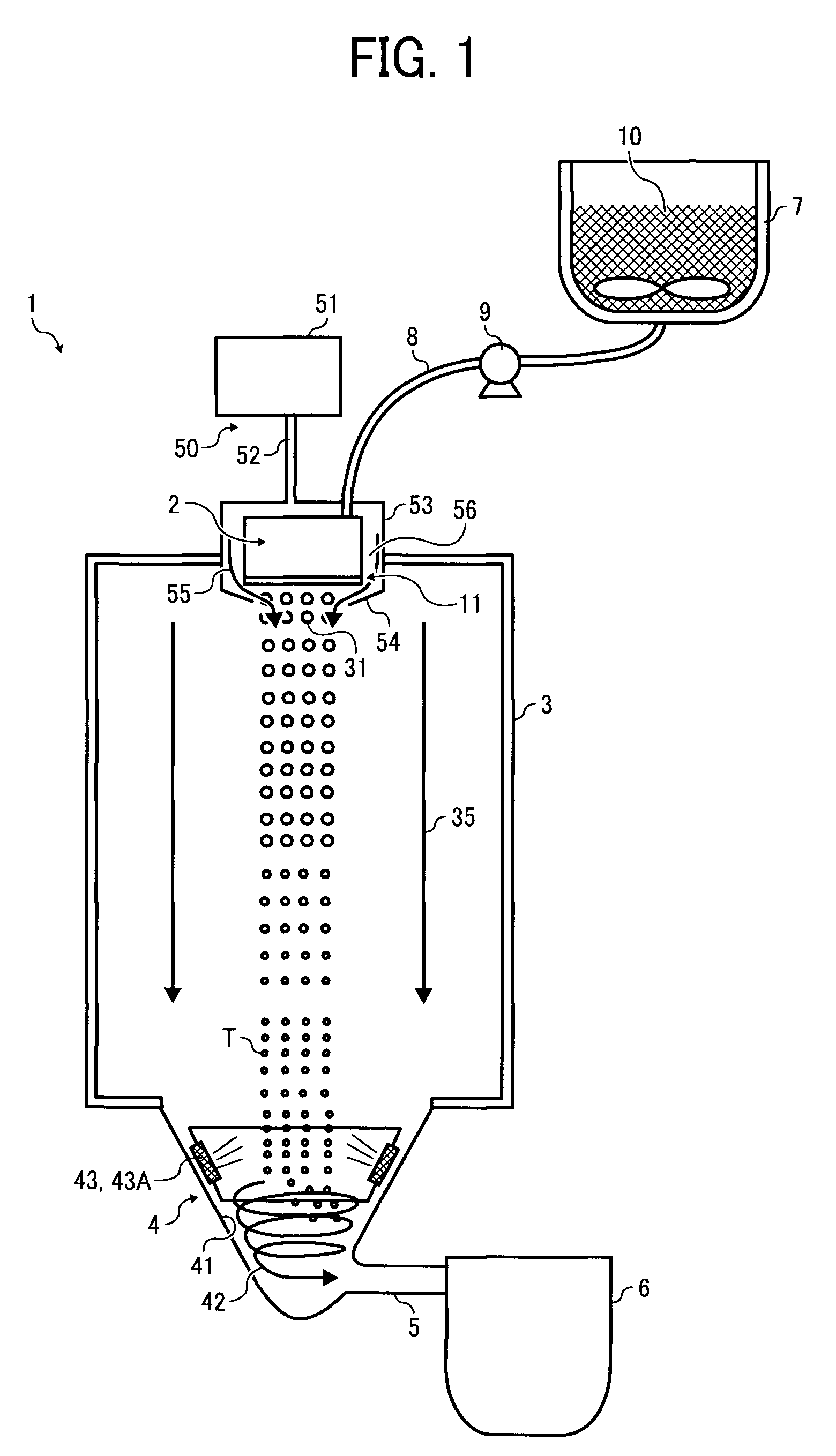Method and apparatus for manufacturing toner and toner manufactured by the apparatus and method
a manufacturing method and technology of toner, applied in the direction of manufacturing tools, instruments, vibration, etc., can solve the problems of degrading affecting the quality of toner, and affecting the chargeability stability of toner particles, etc., to achieve high fluidity and chargeability, high quality, and efficient and reliable manufacturing of toner over time
- Summary
- Abstract
- Description
- Claims
- Application Information
AI Technical Summary
Benefits of technology
Problems solved by technology
Method used
Image
Examples
example 1
(Preparation of Colorant Dispersion)
[0246]First, 17 parts by weight of a carbon black (REGAL® 400, from Cabot Corporation) and 3 parts by weight of a pigment dispersing agent (AJISPER PB821 from Ajinomoto Fine-Techno Co., Inc.) were added to 80 parts by weight of ethyl acetate, and primarily dispersed using a mixer having a stirring blade. The primary dispersion thus obtained was subjected to a strong shearing force using DYNO MILL to finely disperse the carbon black to prepare a secondary dispersion in which aggregates having a diameter of 5 μm or more were completely removed.
(Preparation of Wax Dispersion)
[0247]Next, 18 parts by weight of a carnauba wax and 2 parts by weight of a wax dispersing agent were added to 80 parts by weight of ethyl acetate, and primarily dispersed using a mixer having a stirring blade. The primary dispersion thus obtained was heated to 80° C. while being stirred so that the carnauba wax was melted. Thereafter, the primary dispersion was cooled down to ro...
example 2
[0271]A toner was prepared in the same manner as that described in Example 1, except that gas was introduced between the gas flow path formation member 153 and the liquid droplet injection unit 102 from above through the gas leading path 157 at a pressure of 30 Kpa. As a result, toner particles having a weight average particle diameter (D4) of 5.2 μm and a number average particle diameter (Dn) of 4.9 μm were obtained. No adhesion of the toner constituent liquid 10 to the thin film 116 was observed after two-hour operation. The toner particles were evaluated in the same manner as described above, and evaluation results are shown in Table 1.
example 3
[0272]A toner was prepared in the same manner as that described in Example 1, except that the holes 115 were formed within an area having a width of 10 mm and a length of 200 mm on the thin film 116, and five liquid droplet injection units 2 each including the above-described thin film 116 were arranged in the gas flow generation means 50. As a result, toner particles having a weight average particle diameter (D4) of 5.5 μm and a number average particle diameter (Dn) of 5.0 μm were obtained. No adhesion of the toner constituent liquid 10 to the thin film 116 was observed after two-hour operation. The toner particles were evaluated in the same manner as described above, and evaluation results are shown in Table 1.
PUM
| Property | Measurement | Unit |
|---|---|---|
| weight average particle diameter | aaaaa | aaaaa |
| frequency | aaaaa | aaaaa |
| viscosity | aaaaa | aaaaa |
Abstract
Description
Claims
Application Information
 Login to View More
Login to View More - R&D
- Intellectual Property
- Life Sciences
- Materials
- Tech Scout
- Unparalleled Data Quality
- Higher Quality Content
- 60% Fewer Hallucinations
Browse by: Latest US Patents, China's latest patents, Technical Efficacy Thesaurus, Application Domain, Technology Topic, Popular Technical Reports.
© 2025 PatSnap. All rights reserved.Legal|Privacy policy|Modern Slavery Act Transparency Statement|Sitemap|About US| Contact US: help@patsnap.com



